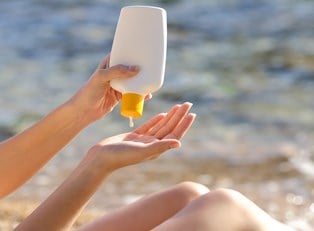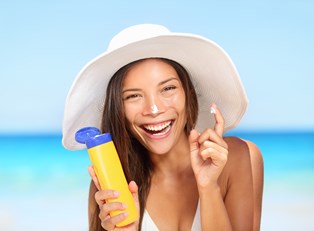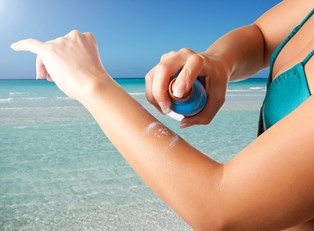Every year, people venture out to the beach or pool and find themselves burnt at the end of the day. Fair complexions are vulnerable to sunburns and skin cancer. Sunscreens are a multimillion dollar business, offering the consumer hundreds of different choices to protect the body’s largest organ. Not all sunscreens are equal, however, and understanding the basic information about this specialized lotion is critical for summer safety.
- SPF Considerations
When you’re shopping for a sunscreen, there’s a wide range of SPF, or Sun Protection Factor, to choose from. You may wonder which one is appropriate for your outing. SPF protects against ultraviolet radiation, which burns your skin and causes premature aging and wrinkling. In general, everyday sunscreen for running errands or visiting friends should have an SPF of 15. This value protects you from 93 % of ultraviolet radiation. For those long days in the sun, wear SPF 30 or 50. Lotions with this level of SPF stop 97 to 98 % of UV rays, respectively.
- Avoid High SPFs
There are lotions noting 75, or even 100, as their SPF level, but it's best to leave these products on the shelves. They often have a high concentration of chemicals that could cause allergic reactions when applied. Other people may believe that the high value protects them all day with one application. This false sense of protection leads to sunburns and poor skin health. If you must use a high SPF, apply it several times a day, like SPF 30 or 50 products.
- Proper Application
The best way to stay safe with sunscreen is to apply about one ounce every two hours. Before you even go outside, apply sunscreen to all exposed skin. Allow 30 minutes to elapse before going outside to ensure the lotion has had been absorbed. You are free to stay out in the sun for the next two hours. If you don't reapply, your skin's natural oils slowly dissolve the barrier of sunscreen, leaving you vulnerable to burns. Set a timer to guarantee you remember when to reapply.
- Wet Conditions
Sunscreen is slightly different when it comes to water activities. You still need to wait 30 minutes before entering the sun and water. After your water activity, reapply sunscreen to toweled-off skin. Whether it is chlorine, fresh, or salt water, sunscreen sloughs off the skin quickly during water activities. Even excessive sweating requires another sunscreen application. Heavy jogging or playing sports in the sun creates a lot of sweat that strips the lotion away. Stay safe all day long with constant sunscreen reapplication.
Pay special attention to seniors and young children when they're enjoying a sunny day. They'll need more frequent sunscreen application to protect their sensitive skin. By understanding sunscreen and its application, you'll avoid burns and reduce your risk skin cancer in the future.




